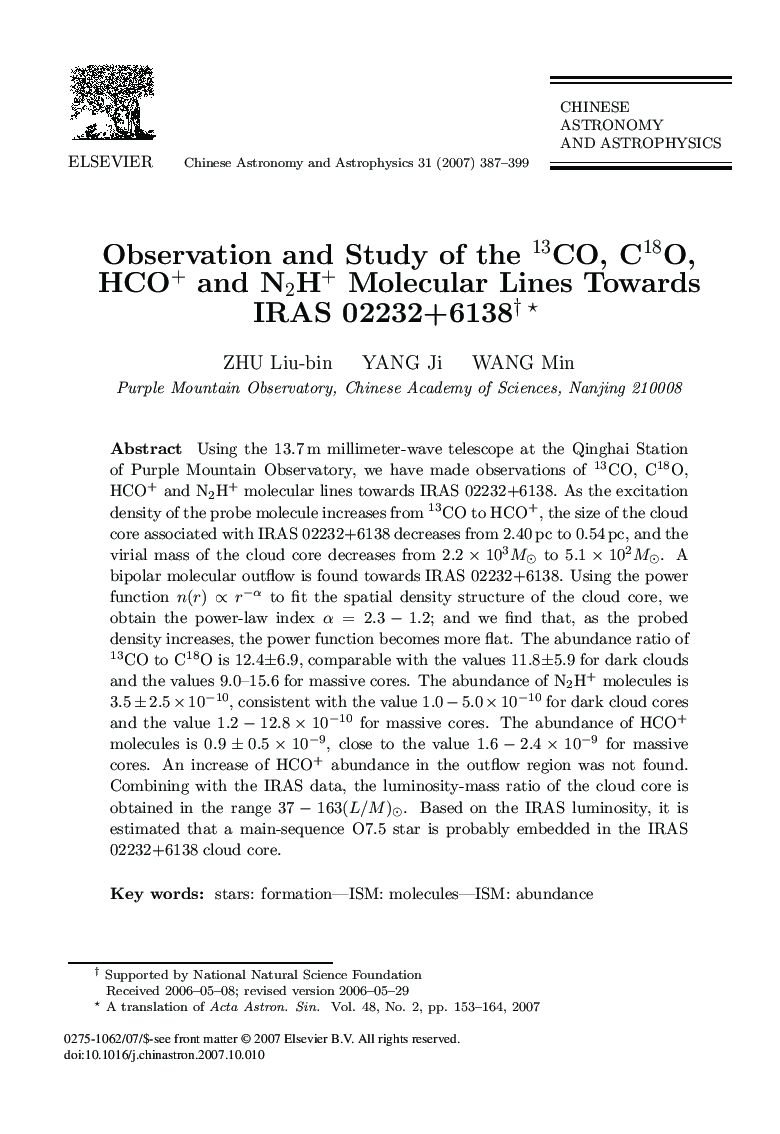| Article ID | Journal | Published Year | Pages | File Type |
|---|---|---|---|---|
| 1772230 | Chinese Astronomy and Astrophysics | 2007 | 13 Pages |
Using the 13.7 m millimeter-wave telescope at the Qinghai Station of Purple Mountain Observatory, we have made observations of 13CO, C18O, HCO+ and N2H+ molecular lines towards IRAS 02232+6138. As the excitation density of the probe molecule increases from 13CO to HCO+, the size of the cloud core associated with IRAS 02232+6138 decreases from 2.40 pc to 0.54 pc, and the virial mass of the cloud core decreases from 2.2 × 103M⊙ to 5.1 × 102M⊙. A bipolar molecular outflow is found towards IRAS 02232+6138. Using the power function n(r) ∝ r−α to fit the spatial density structure of the cloud core, we obtain the power-law index α = 2.3 − 1.2; and we find that, as the probed density increases, the power function becomes more flat. The abundance ratio of 13CO to C18O is 12.4 ± 6.9, comparable with the values 11.8 ± 5.9 for dark clouds and the values 9.0–15.6 for massive cores. The abundance of N2H+ molecules is 3.5 ± 2.5 × 10−10, consistent with the value 1.0 − 5.0 × 10−10 for dark cloud cores and the value 1.2 − 12.8 × 10−10 for massive cores. The abundance of HCO+ molecules is 0.9 ± 0.5 × 10−9, close to the value 1.6 − 2.4 × 10−9 for massive cores. An increase of HCO+ abundance in the outflow region was not found. Combining with the IRAS data, the luminosity-mass ratio of the cloud core is obtained in the range 37–163(L/M)⊙. Based on the IRAS luminosity, it is estimated that a main-sequence O7.5 star is probably embedded in the IRAS 02232+6138 cloud core.
